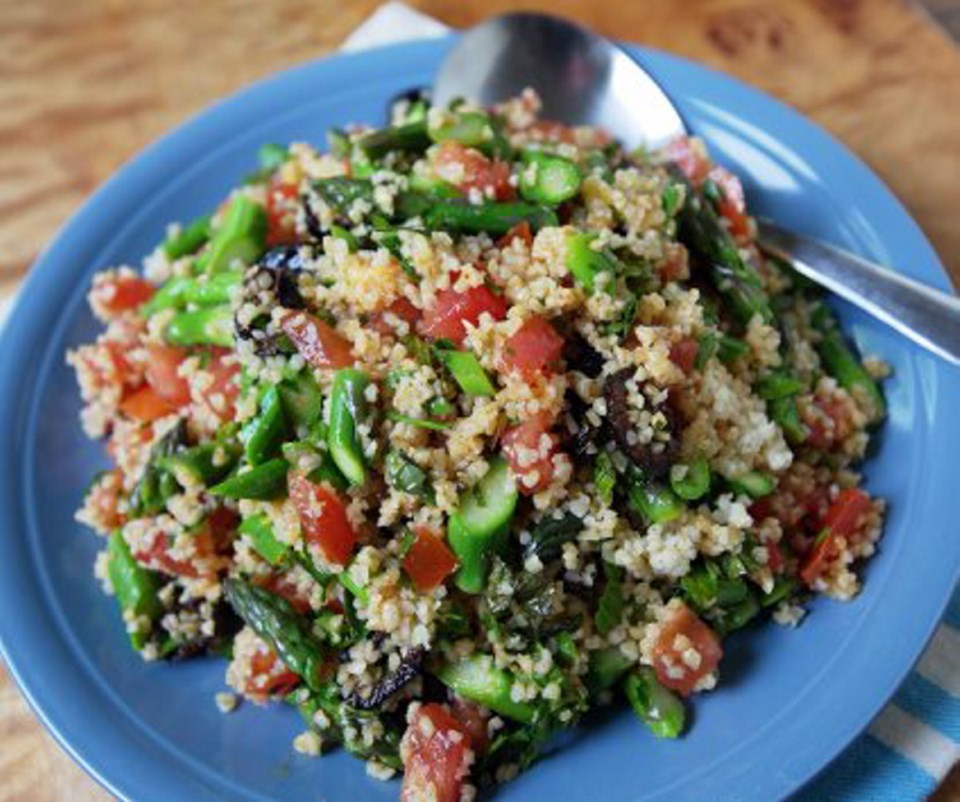 Dear Eric: What is the difference between bulgur wheat and freekeh?
Dear Eric: What is the difference between bulgur wheat and freekeh?
Pam
PamтАЩs query came in shortly after I answered another readerтАЩs question about what freekeh is and how to prepare it.
If you missed that column, as a refresher, freekeh, pronounced тАЬfreek-kah,тАЭ is a cereal grain made by roasting and cracking immature and soft green wheat. ItтАЩs an ancient Arabian/North African food that has become trendy to eat in places such as North America.
One reason is because freekeh is good for you, as the roasting and drying process captures the wheat grains at their peak of nutrition. Freekeh is high in fibre, a good source of protein and many minerals, and is low in carbohydrates and fat.
Beyond good nutrition, another appeal of freekeh, which has an almost smoky, nutty taste and pleasingly chewy texture, is that it is easy to cook. Put one part of it in a pot, add two parts water, bring to a boil, cover, turn the heat to low and let the freekeh steam about 20 to 25 minutes, until plumped and tender.
Freekeh is also popular because itтАЩs versatile and can be used as you would other grains and rice, in such things as pilafs, soups, stuffings and salads.
Bulgur, also spelled bulgher and burghul, is also an ancient food made from wheat and a staple of the Middle East. To make it, mature wheat kernels are turned into a longer-lasting, quicker-to-cook form by parboiling, drying and grinding them into different sizes, such as coarse grind, medium and fine.
Bulgur has more of tan colour, while freekeh has a green hue from the green wheat used to make it. Bulgur does share a similar nut-like flavour and pleasing, chewy texture, and both contain gluten.
You can steam and simmer and cook bulgur as you would freekeh, but because it is ground into smaller bits, it cooks quicker in such things as pilaf and casseroles.
Bulgur can also be simply set in a bowl, covered with boiling water, covered and left to sit about 30 minutes, until plumped up and softened and the water has been absorbed.
In this form, bulgur is great to use in salads, the most famous being tabbouleh.
Like freekeh, bulgur is also nutritious, being high in fibre, rich in B vitamins and a good source of minerals, such as iron, phosphorus and manganese.
Bulgur sometimes gets confused with cracked wheat, but that cereal grain is not parboiled, so it takes longer to cook.
Just a few years ago, it seemed that freekeh was available only at a few┬а health and bulk foods stores, but nowadays itтАЩs more fashionable and even some supermarkets stock it.
The reverse seems to be true for bulgur. For years it was more readily available, but when looking for some for this story, I found it in no supermarkets I checked, just my local bulk-food store.
Bulgur Salad with Tomatoes, Asparagus and Olives
This colourful salad sees soaked and softened bulgur dressed Mediterranean-style, with olive oil, citrus and fresh herbs.
Preparation time: 25 minutes
Cooking time: 15 minutes
Makes: eight servings
1 cup medium-grind bulgur
1 1/4 cups boiling water
3/4 lb. asparagus, woody stems trimmed, spears cut into 1/2-inch thick slices on the bias
3 Tbsp olive oil
1 tsp finely grated lemon zest
1 Tbsp fresh lemon juice
1 tsp finely grated orange zest
1 Tbsp fresh orange juice
1/4 cup coarsely chopped fresh mint
1/4 cup coarsely chopped fresh parsley
1 or 2 large garlic cloves, minced
2 ripe on the vine tomatoes, cut into small cubes
16 black olives, each broken into 2 or 3 pieces
1 tsp ground cumin
1 tsp paprika
1/8 tsp cayenne pepper
тАв salt and freshly ground black pepper to taste
Place the bulgur in a large bowl (you will eventually mix the whole salad there) and pour over the boiling water. Cover and let stand 30 minutes, until bulgur has softened and the water has been absorbed. Uncover and let bulgur cool to room temperature.
While bulgur cools, cook the asparagus in a medium pot filled with boiling water for two minutes, until just tender. Drain well, cool asparagus in ice-cold water, and then drain well again.
When the bulgur has cooled, add the asparagus and all remaining ingredients to it and toss to combine. Cover and refrigerate the salad until needed. It can be made several hours ahead. Toss again gently before serving.
Eric Akis is the author of eight cookbooks. His latest is The Great Rotisserie Chicken Cookbook (Appetite by Random House). His columns appear in the Life section Wednesday and Sunday.
[email protected]



